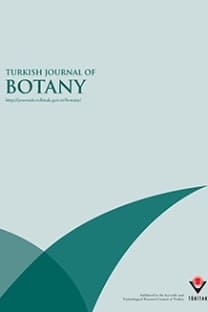Red Tide Observations along the Eastern Black Sea Coast of Turkey
red tide, phytoplankton, algal bloom, Black Sea
Red Tide Observations along the Eastern Black Sea Coast of Turkey
red tide, phytoplankton, algal bloom, Black Sea,
___
- Bodenau N & Ruta G (1998). Development of the planktonic algae in the Romanian Black Sea sector in 1981-1996. VIII International conference on harmful algae, UNESCO, Santiago de Compostela, Spain, 188-191.
- Brand LE (1991). Minimum iron requirements of marine phytoplankton and the implications for the biogeochemical control of new production. Limnol and Oceanogr 36: 1756-1771.
- Buskey EJ, Montagna PA, Amos AF, Whitledge TE (1997). Disruption of grazer population as a contributing factor to the initiation of the Texas brown tide algal bloom. Limnol and Oceanogr 42: 1215-1222.
- Chavez FP, Buck KR, Coale KH, Martin JH, Ditullio GR, Welshchmeyer NA, Jacobsen AC & Barber RT (1991). Growth rate, grazing, sinking, and iron limitation of equatorial Pacific phytoplankton. Limnol and Oceanogr 36: 1816-1833.
- Drebes G (1974). Marines Phytoplankton, Germany: Georg Thieme Vellag
- Koray T (1984). The occurrence of red tide and causative organisms in Izmir Bay, E.U. faculty of science journal. series B, Vol VII. NR.1: 75-83.
- Mihnea PE (1987) The eutrophication process in the inshore Romanian Black Sea. Revue Roumaine de Biologie 32: 149-155.
- Mihnea PE (1992). An appeal from Romania. Harmful Algae News, UNESCO 3: 4.
- Parsons TR, Maita Y & Lalli CM (1989). A Manual of Chemical and Biological Methods for Seawater Analysis. Great Britain: Pergamon Press.
- Smayda TJ (1997). Harmful algal bloom: their ecophysiology and general relevance to phytoplankton bloom in the sea. Limnol. and Oceanogr 42: 1137-1153.
- Sunda WG, Swift DG & Hustsman SA (1991). Low iron requirement for growth in oceanic phytoplankton. Nature 351: 55-57.
- Throndsen J (1978). Preservation and Storage. In: Sournia, A. (Ed.), Phytoplankton Manual, Monographs on oceanographic methodology, pp. 69-75, UK: UNESCO Press.
- Throndsen J (1995). Estimating cell numbers. In: Hallegraeff GM, Amderson DM, Cembella AD, Enevoldsen HO (Eds.). Manual on harmful marine microalgae. IOC manual and guides No 33, pp. 63-72, France: UNESCO Publication.
- Tomas CR (1993). Marine Phytoplankton, A Guide to Naked Flagellates and Coccolithophorids, London: Academic Press.
- Tomas CR (1996). Identification Marine Diatoms and Dinoflagellates, London: Academic Press.
- Tregouboff G & Rose M (1957). Manuel de Planktonologie Mediterraneenne: Text et Illustrationes. Paris: Center National De Reserche Scientifique.
- Velikova VN (1998). Long-term study of red tides in the western Black Sea and their ecological modeling. VIII International conference on harmful algae, UNESCO, Santiago de Compostela, Spain, 192- 193.
- Wyatt T & Pazos Y (1992). Harmful algal blooms. Harmful algae news, UNESCO 62: 5.
- ISSN: 1300-008X
- Yayın Aralığı: 6
- Yayıncı: TÜBİTAK
Subalpine and Alpine Flora of Altındere Valley (Maçka, Trabzon)
Seyran PALABAŞ UZUN, Rahim ANŞİN
Ali KANDEMİR, Serdal MAKBUL, Zafer TÜRKMEN, Murat YILMAZ
Foliar response of Ipomea pes-tigridis L. to coal-somake pollution
R. B. Verma MAHMOODUZZAFAR, Tariq Omar SIDDIQI, M. IQBAL
Foliar Response of Ipomea pes-tigridis L. to Coal-Smoke Pollution
R.B. VERMA, - MAHMOODUZZAFAR, Tariq Omar SIDDIQI, M. IQBAL
Ferula parva Freyn & Bornm. (Apiaceae): A Contribution to an Enigmatic Species from Turkey
Ferula parva Freyn & Bornm. (Apiaceae): A Contribution to an Enigmatic Species from Turkey
Net Planktonic Diatom (Bacillariophyceae) Composition of Lake Abant (Bolu)
Abuzer ÇELEKLİ & Okan KÜLKÖYLÜOĞLU
Alleviation of Salinity-Induced Dormancy by Growth Regulators in Wheat Seeds
Zamin Shaheed SIDDIQUI, Syed Shahid SHAUKAT, - Arif-Uz-ZAMAN
